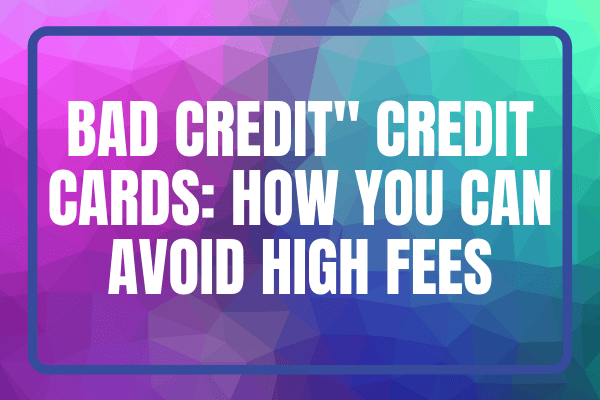“Bad Credit” Credit Cards: How You Can Avoid High Fees
“Bad Credit” Credit Card #2: This credit card charges a very high interest rate for an unsecured credit card. This can’t be good. But the setup fee is only $29. Maybe this card isn’t so bad. There is that pesky monthly maintenance fee of $6.50 per month which brings the cost of this unsecured credit card to $107. Maybe we’ve found a bargain. Not quite. The annual fee is a whopping $150. Yes, $150 every year. That not only brings the initial cost up to $257, but you will also pay $228 a year just to maintain the credit card. There has to be a better offer.
“Bad Credit” Credit Card #3: This credit card is available as both a secured and unsecured credit card, based on the issuer’s review of your credit history. The interest rate is average, even competitive. Now, the fine print reveals that there is a one time setup fee. However, based on your credit, this fee can be as low as $0 or as high as $49. So far so good, especially if your credit is not that bad. But, there must be a huge annual fee. Not exactly. The annual fee for a secured credit card is only $35, and for an unsecured credit card, this fee can be as low as $39 or up to $79. So far, the cost of this card ranges from $35 to $128. Now it’s time for the monthly maintenance fee. This one has to be huge. Or not. Its $0. That means the most you could possible be charged to obtain this credit card is $128, about half of what competing cards are charging.
Clearly, there are substantial difference between “bad credit” credit cards. Of the three offers we have examined, only one doesn’t take you to the cleaners. In fact, “bad credit” credit card #3 provides great value. All positive changes to your credit history and credit score will translate into lower loan rates, lower credit card interest rates, lower insurance rates, and ultimately, thousands of dollars in savings. The path to rebuilding credit has its costs, but in the long term, rebuilding your credit with a “bad credit” credit card is the fastest and most cost-efficient way to correct the often unfortunate circumstances that have damaged your credit in the first place. That’s all about “Bad Credit” Credit Cards: How You Can Avoid High Fees.
©2006 Credit Card Depot Inc.



